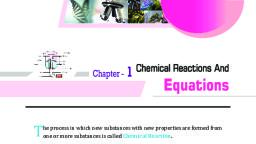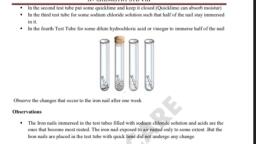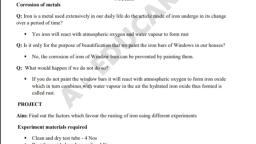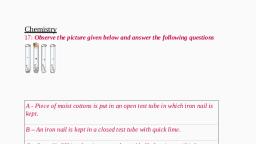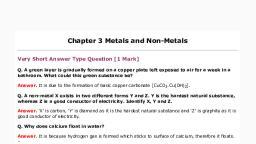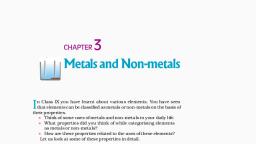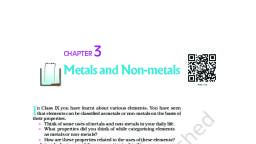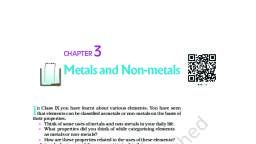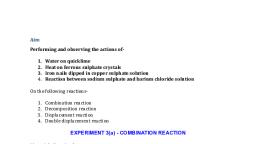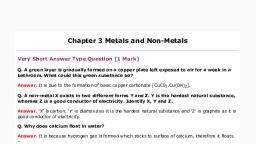Page 1 :
Corrosion The rusting of iron (iron oxide), tarnishing of silver (silver sulphide), development of green coating on copper (copper carbonate) and bronze are some of the examples of corrosion. , Activity 2 , Take three test tubes and place clean iron nails in each of them., Label these test tubes A,B and C. pour some water in test tube A and cork it. , Pour boiled distilled water in test tube B, add about 1 ml of oil and cork it. The oil will float on water and prevent the air from dissolving in the water., Put some anhydrous calcium chloride in test tube C and cork it. Anhydrous calcium chloride will absorb the moisture, if any, from the air., Leave these test tubes for a few days and then observe., We will observe that iron nails rust in test tube A, but they do not rust in test tubes B and C., In the test tube A, the nails are exposed to both air and water. In B the nails are exposed to only water, and the nails in test tube C are exposed to dry air.
Page 2 :
In metallic corrosion, a metal is oxidised by loss of electrons generally to oxygen and results in the formation of oxides., Corrosion of iron occurs in presence of water and air., During corrosion at a particular spot on the surface of an object made of iron, oxidation takes place and that spot behaves as anode. , We can write the reaction as., Anode: 2Fe , Electrons released at this anodic spot move through the metal and go to another spot on the metal and reduce oxygen at that spot in presence of H⁺. This spot behaves as cathode with the reaction is. , Cathode: O₂ + 4H⁺ + 4e⁻ 2H₂O, The overall reaction is: 2Fe + O₂ + 4H⁺ 2Fe²⁺ + 2H₂O
Page 4 :
The Ferrous ions are further oxidised by atmospheric oxygen to Ferric ions which come out as rust in the form of hydrated ferric oxide (Fe₂O₃.XH₂O) and with further production of hydrogen ions., Prevention of corrosion , Prevention of corrosion is of prime importance. It not only saves money but also helps in preventing accidents such as a bridge collapse or failure of a key component due to corrosion., One of the simplest methods of preventing corrosion is by covering the surface with paint or by some chemicals. Another method is to cover the surface by other metals (Sn, Zn etc) that are inert or react themselves with atmosphere to save the object. This is generally done by electroplating., Suggest an experiment to prove that the presence of air and water are essential for corrosion. Explain the procedure.





















